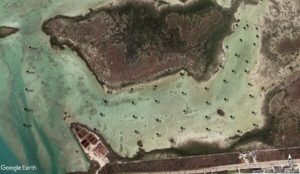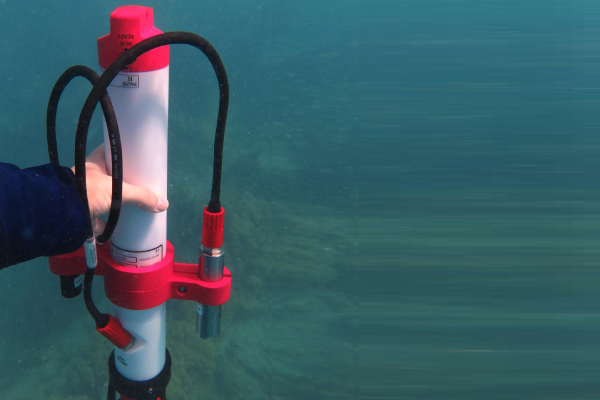Snorkelling through coral reefs and kayaking through mangroves is undoubtedly not how most ocean scientists would think to deploy a CTD. But thanks to RBR’s easy-to-use, lightweight CTD, SEA Semester students researching coral reefs and mangroves along the Florida Keys were able to do just that.
Based in Woods Hole, Massachusetts, Sea Education Association (SEA) is a leading non-profit, independent educational institution focused on environmental studies and the world’s oceans. Hoping to engage and inspire the next generation of ocean leaders, their flagship study abroad program – SEA Semester – allows undergraduate students to participate on a research voyage focused on a unique ocean theme.
One of SEA Semester’s programs is a 12-week Caribbean Reef Expedition. This program centres on conservation, policy, and marine ecosystems while looking at solutions to allow for effective reef management in the context of history, policy, and science. In 2020, the expedition took students to the northernmost reef ecosystem within the Caribbean – the Florida Reef Tract – to better understand human relationships and impacts in the third-largest barrier reef ecosystem in the world.
To enable students to take high-quality measurements, SEA Semester required a high-quality instrument. In past years, the SEA Semester program utilized an older RBR CTD model that only measured temperature, salinity, and pressure. But, after meeting with an RBR representative, SEA Faculty Member Dr. Heather Page was able to make a connection and borrow a new RBRconcerto3 C.T.D.ODO.Tu for this Caribbean Reef Expedition (Figure 1). “Having the RBRconcerto3 C.T.D.ODO.Tu allowed us to collect data we wouldn’t have been able to collect otherwise,” said Dr. Heather Page, Assistant Professor of Oceanography, specializing in Coral Reef Biological Oceanography. “We had an older instrument that just measured temperature, salinity, and pressure, but the technology on this one was incredible.”
The RBRconcerto3 CTD is a flexible, option-packed logger with customizable add-ons to suit any researcher’s needs – including dissolved oxygen, fluorescence, pH, and turbidity to name a few. However, even without any add-ons, this novel CTD boasts a number of state-of-the-art features like USB-C download, twist activation, real-time communications and is Wi-Fi ready.
For Dr. Page and her students, the additional sensors available on this RBRconcerto3 C.T.D.ODO.Tu made a big difference. “What I really liked about this RBR instrument is that we had oxygen and turbidity sensors. This gave us more insight into the water quality on reefs in the Florida Keys, especially because they are two parameters that can affect coral health.”
One of the other significant features of the RBRconcerto3 C.T.D.ODO.Tu is its small size and ease of use, a particular benefit for this project. “I loved the ease of using it in the field,” noted Dr. Page. And its use in the field was certainly unique. For this project, students snorkelled or kayaked through their sampling transects, towing the CTD behind them before pausing at each station to measure the parameters and then continuing on. “Because it is so light and small, it was easy to just tow behind you as you were snorkelling on the reef, which can’t be said for every instrument out there,” laughed Dr. Page.
The ease of data collection was also crucial for Dr. Page as she was working with students. “When we got out to the reef, I would just turn on the instrument and check my phone to make sure everything was working before we jumped in the water with it. It was great to be able to double-check and make sure everything was functioning properly.”
In addition, she highlighted the twist activation as one of the clear benefits of this model, particularly when working with students in the water. “We used the twist cap a lot to ‘pause’ our data collections while the instrument was passed from one student group to the next. This made it really easy when we went to analyze the data to see each individual transect and data set collected along the reef.” Because of this feature and its overall ease-of-use, students collected a lot of valuable data across the transects (Figure 2).

Dr. Page also noted the ease of analyzing and processing the data after they were collected. “When we got back from our snorkelling or kayaking expeditions, I would download the data and then share it with the students who would then take it and analyze it for their independent research projects.” As part of this program, students had to develop a hypothesis within the framework of these reef surveys. They then had to test their hypotheses – analyzing data, writing papers, and then presenting their research to the ship’s company at the end of the program.
Dr. Page noted that several of the students utilized the data collected from the RBRconcerto3 C.T.D.ODO.Tu for their independent research projects (Table 1). Two groups investigated the correlations between ocean properties – including temperature, salinity, dissolved oxygen, and turbidity measured by the RBRconcerto3 C.T.D.ODO.Tu – and coral abundance, zoanthid abundance, and coral health. In addition, one student investigated the impact of ocean warming on corals inhabiting reef and mangrove ecosystems, while another combined their love of music and marine biology to examine the soundscape ecology of coral reefs. By correlating sound velocity with the ocean parameters measured with the RBRconcerto3 C.T.D.ODO.Tu, this student was able to compare the differences in sound velocity across two reef ecosystems (Reef Site A and B, Table 1). Based on this analysis, they then investigated whether sound velocity in coral reef ecosystems affects the abundance of soniferous fish – which rely on sound for communication – within coral reefs.
Table 1: Parameters measured by the RBRconcerto3 C.T.D.ODO.Tu as it was towed along two coral reef sites in the Florida Keys
|
Parameter |
Reef Site A |
Reef Site B |
|
Temperature (°C) |
26.98 ± 0.05 |
27.38 ± 0.04 |
|
Salinity (psu) |
35.98 ± 0.00 |
36.02 ± 0.01 |
|
Dissolved Oxygen (mmol L-1) |
203.69 ± 4.19 |
225.17 ± 1.37 |
|
Turbidity (NTU) |
0.42 ± 1.78 |
0.72 ± 1.35 |
These data have certainly proved useful for the students’ projects, and they will also be shared with the Florida Keys National Marine Sanctuary to be used to help support reef conservation efforts in the area. In addition, the data will be available upon request from the SEA website.
While snorkelling through coral reefs and mangroves may seem like a unique way of using the RBRconcerto3 C.T.D.ODO.Tu, it was ideal for both the physical environment as well as for teaching students. “I am definitely interested in continuing to use this instrument for our coral reef surveys in the future,” Dr. Page noted, adding, “I would love to continue collaborating and using this specific CTD with these additional sensors [dissolved oxygen and turbidity]. It’s so great to have these extra data to get a better understanding of water quality on the reefs, as well as offering an additional opportunity for students to follow their own interest in ocean chemistry.”
The RBRconcerto3 CTD is a flexible, option-packed logger that can be customized to suit your needs. Discover more about the RBRconcerto3 CTD, any of our other standard loggers, or contact us for help or more information.
